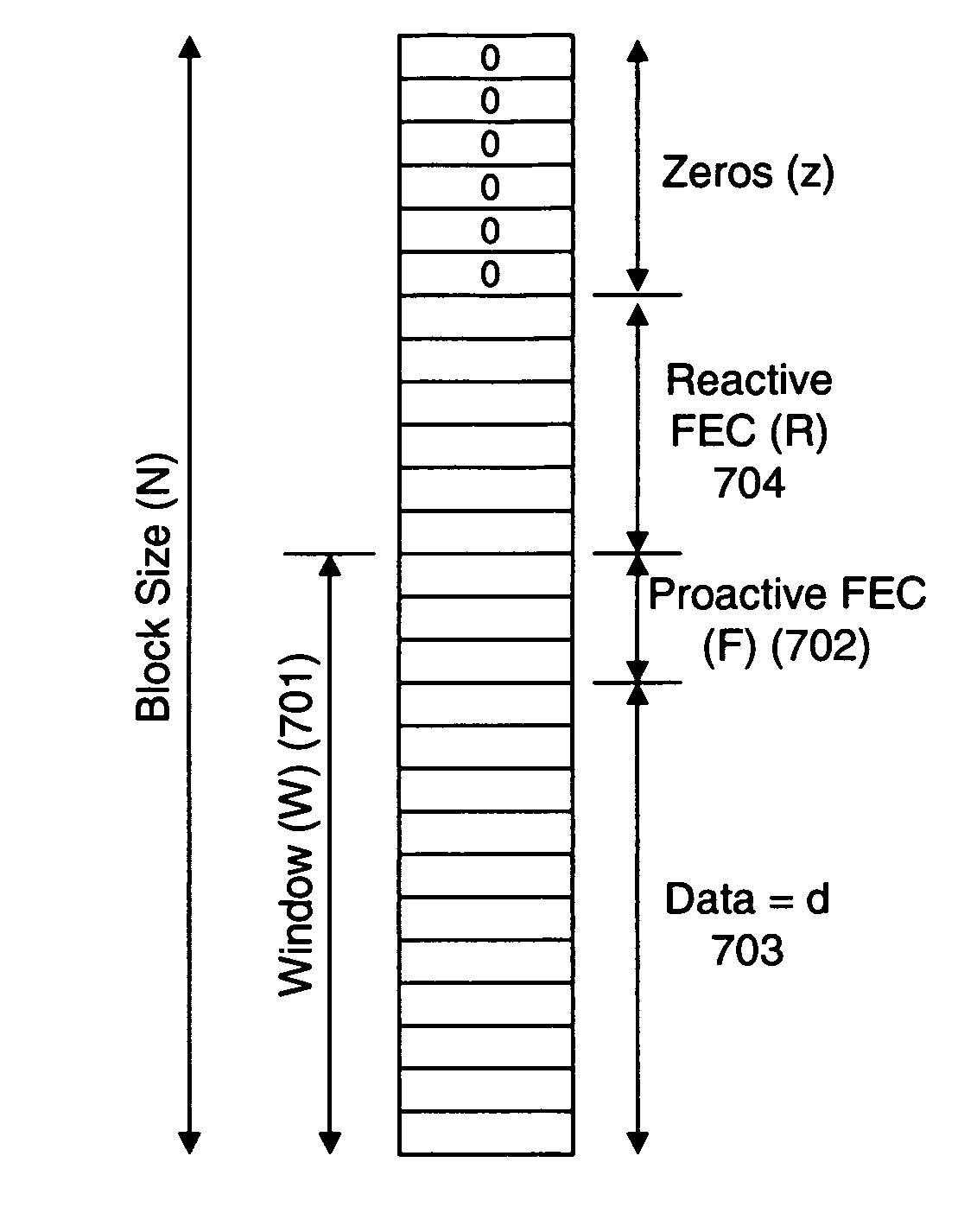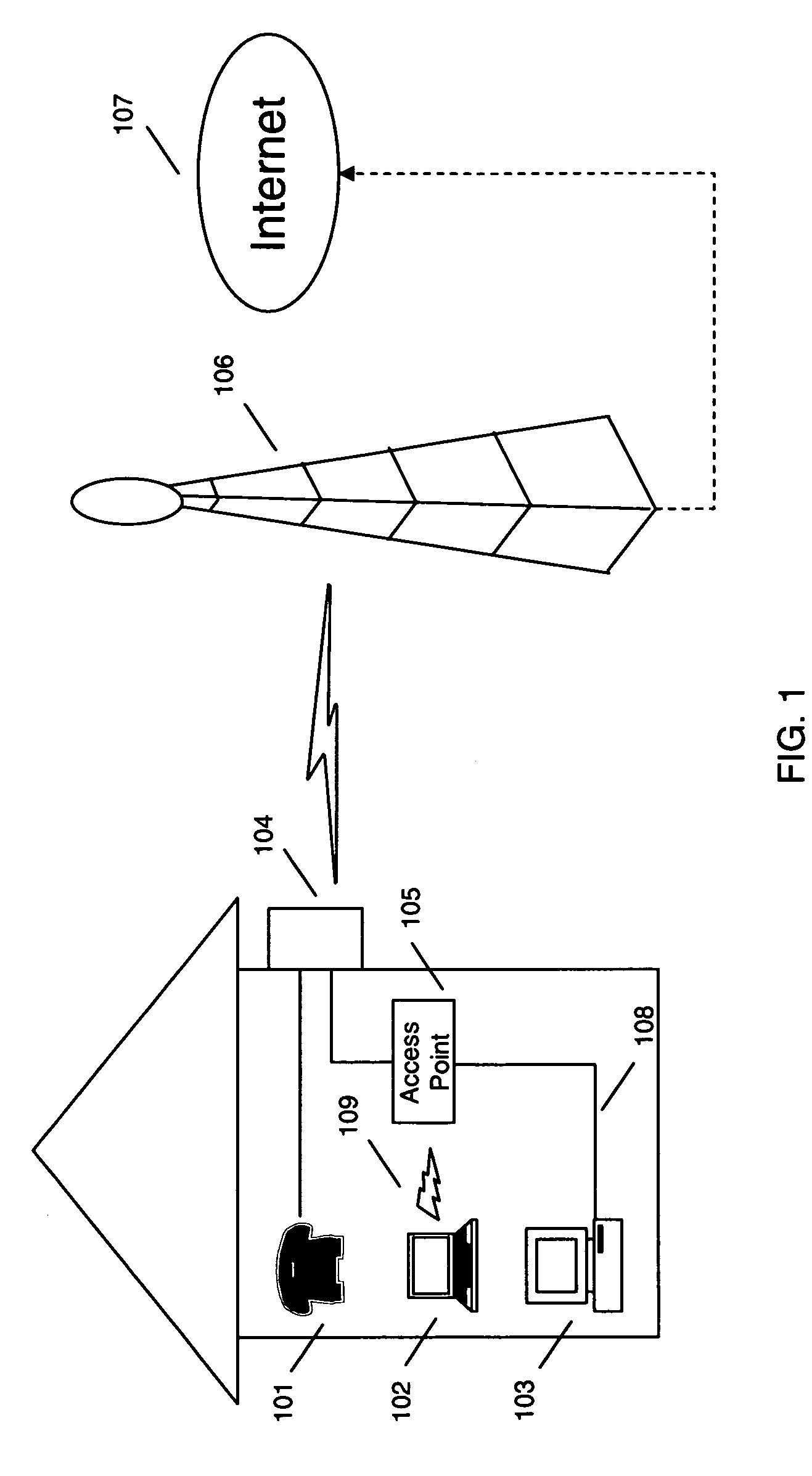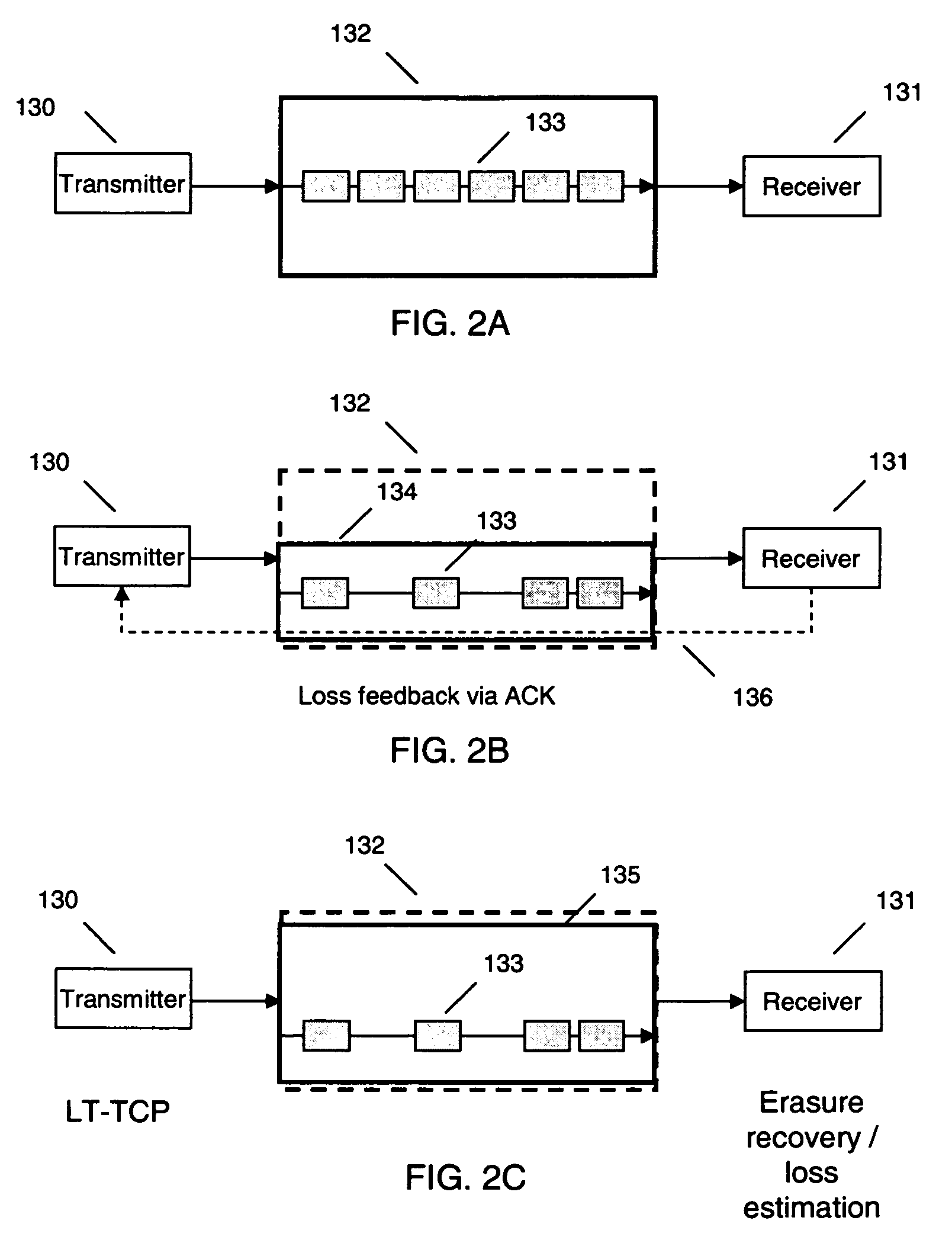Loss tolerant transmission control protocol
a transmission control and loss-tolerant technology, applied in the field of communication networks, can solve the problems of loss of wireless channels, impaired transmission of communication data, data loss during transmission, etc., and achieve the effect of reducing congestion windows and reducing the size of bytes
- Summary
- Abstract
- Description
- Claims
- Application Information
AI Technical Summary
Benefits of technology
Problems solved by technology
Method used
Image
Examples
Embodiment Construction
s="d_n">[0032]FIG. 12 is a flowchart illustrating another example of a method of transmitting data and / or FEC packets in a data block in which one or more illustrative embodiments of the invention may be implemented.
[0033]FIG. 13 is a flowchart illustrating one example of obtaining or adjusting window granularity in which one or more illustrative embodiments of the invention may be implemented.
[0034]FIG. 14 is a flowchart illustrating another example of obtaining or adjusting window granularity in which one or more illustrative embodiments of the invention may be implemented.
[0035]FIG. 15 is a flowchart illustrating an example of the transmission of reactive FEC packets in which one or more illustrative embodiments of the invention may be implemented.
[0036]FIG. 16 is a flowchart illustrating an example of a method of decoding at a receiver in which one or more illustrative embodiments of the invention may be implemented.
DETAILED DESCRIPTION OF THE INVENTION
[0037]In the following des...
PUM
 Login to View More
Login to View More Abstract
Description
Claims
Application Information
 Login to View More
Login to View More - R&D
- Intellectual Property
- Life Sciences
- Materials
- Tech Scout
- Unparalleled Data Quality
- Higher Quality Content
- 60% Fewer Hallucinations
Browse by: Latest US Patents, China's latest patents, Technical Efficacy Thesaurus, Application Domain, Technology Topic, Popular Technical Reports.
© 2025 PatSnap. All rights reserved.Legal|Privacy policy|Modern Slavery Act Transparency Statement|Sitemap|About US| Contact US: help@patsnap.com



